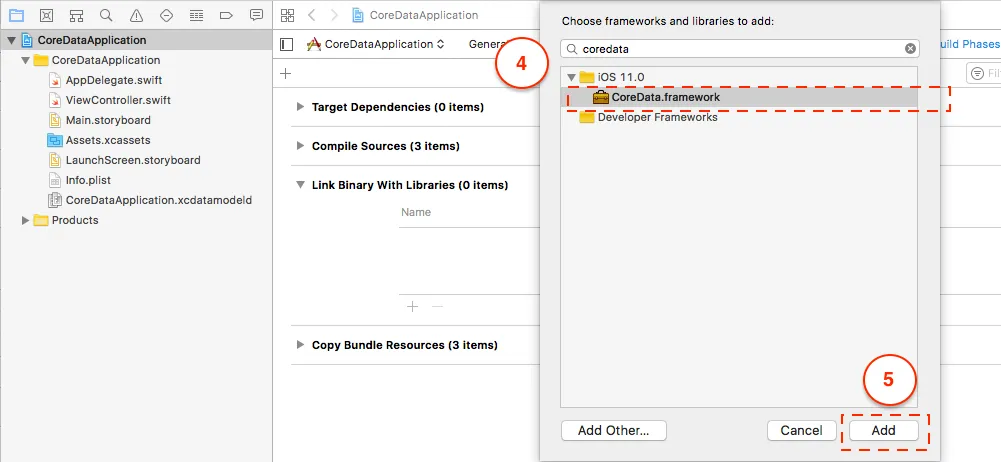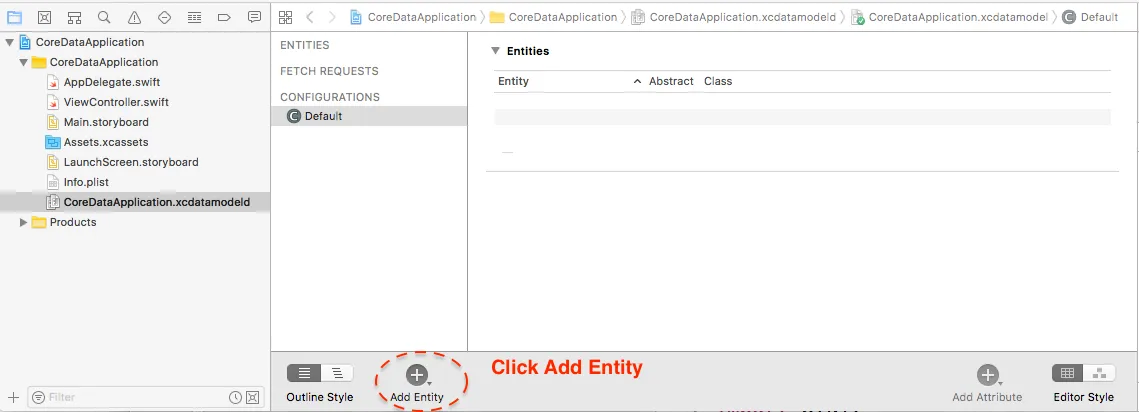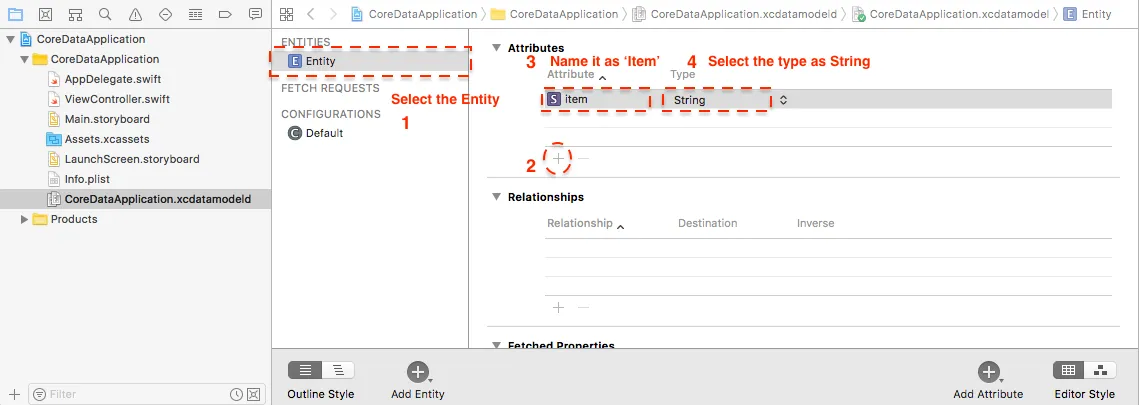我希望给一个已有的iPhone项目添加核心数据,但是我仍然遇到了很多编译错误:
- NSManagedObjectContext undeclared
- Expected specifier-qualifier-list before 'NSManagedObjectModel'
- ...
我已经将Core Data框架添加到目标中(在“Targets”下右键单击我的项目,“Add” - “Existing Frameworks” - “CoreData.framework”)。
我的头文件:
NSManagedObjectModel *managedObjectModel;
NSManagedObjectContext *managedObjectContext;
NSPersistentStoreCoordinator *persistentStoreCoordinator;
[...]
@property (nonatomic, retain, readonly) NSManagedObjectModel *managedObjectModel;
@property (nonatomic, retain, readonly) NSManagedObjectContext *managedObjectContext;
@property (nonatomic, retain, readonly) NSPersistentStoreCoordinator *persistentStoreCoordinator;
我错过了什么?开始一个新项目不是选项...
非常感谢!
编辑
抱歉,我确实有那些实现...但似乎缺少库...实现方法中充满了编译错误,如“managedObjectContext未声明”,“NSPersistentStoreCoordinator未声明”,但也包括“在NSManagedObjectContext之前期望')'”(尽管括号似乎是正确的)...
#pragma mark -
#pragma mark Core Data stack
/**
Returns the managed object context for the application.
If the context doesn't already exist, it is created and bound to the persistent store
coordinator for the application.
*/
- (NSManagedObjectContext *) managedObjectContext {
if (managedObjectContext != nil) {
return managedObjectContext;
}
NSPersistentStoreCoordinator *coordinator = [self persistentStoreCoordinator];
if (coordinator != nil) {
managedObjectContext = [[NSManagedObjectContext alloc] init];
[managedObjectContext setPersistentStoreCoordinator: coordinator];
}
return managedObjectContext;
}
/**
Returns the managed object model for the application.
If the model doesn't already exist, it is created by merging all of the models found in
application bundle.
*/
- (NSManagedObjectModel *)managedObjectModel {
if (managedObjectModel != nil) {
return managedObjectModel;
}
managedObjectModel = [[NSManagedObjectModel mergedModelFromBundles:nil] retain];
return managedObjectModel;
}
/**
Returns the persistent store coordinator for the application.
If the coordinator doesn't already exist, it is created and the application's store added to it.
*/
- (NSPersistentStoreCoordinator *)persistentStoreCoordinator {
if (persistentStoreCoordinator != nil) {
return persistentStoreCoordinator;
}
NSURL *storeUrl = [NSURL fileURLWithPath: [[self applicationDocumentsDirectory]
stringByAppendingPathComponent: @"Core_Data.sqlite"]];
NSError *error = nil;
persistentStoreCoordinator = [[NSPersistentStoreCoordinator alloc]
initWithManagedObjectModel:[self managedObjectModel]];
if (![persistentStoreCoordinator addPersistentStoreWithType:NSSQLiteStoreType
configuration:nil URL:storeUrl options:nil error:&error]) {
/*
Replace this implementation with code to handle the error appropriately.
abort() causes the application to generate a crash log and terminate. You should
not use this function in a shipping application, although it may be useful during
development. If it is not possible to recover from the error, display an alert panel that
instructs the user to quit the application by pressing the Home button.
Typical reasons for an error here include:
* The persistent store is not accessible
* The schema for the persistent store is incompatible with current managed object
model
Check the error message to determine what the actual problem was.
*/
NSLog(@"Unresolved error %@, %@", error, [error userInfo]);
abort();
}
return persistentStoreCoordinator;
}



